A Vanderbilt Mansion
Our Hyde Park Overnight is nearing its end, but not before we stop to see how the other half lived. How would you spend a huge inheritance received during the Gilded Age? Build a mansion (or two or three), of course!
Click on the first photo in each group and scroll to see the square photos at full size.
To start at the beginning of this series, visit Bay State Getaway 2022.
Frederick and Louise Vanderbilt stayed in this 16-room home during construction of their mansion. It eventually became a guest house until Louise’s death in 1926. Now it houses the Visitor Center.
The Gilded Age
“The Gilded Age” is the term used to describe the tumultuous years between the Civil War and the turn of the twentieth century… During this era, America became more prosperous and saw unprecedented growth in industry and technology. But the Gilded Age had a more sinister side: It was a period where greedy, corrupt industrialists, bankers and politicians enjoyed extraordinary wealth and opulence at the expense of the working class. In fact, it was wealthy tycoons, not politicians, who inconspicuously held the most political power during the Gilded Age.” ~ READ MORE
This period in history brought about many changes for the U.S., but none more significant than the Transcontinental Railroad. Completed in 1869, it made transporting people and products over long distances easier and safer, thereby contributing to quick settlement of the western states. Because of the stress put upon the rail companies to keep up with the demands of a growing nation, many questionable deals were made and rail company executives received stacks of cash and millions of acres of land from the U.S. government to ensure it all went smoothly.
This architectural style is known as Beaux-Arts: large and grandiose appearance, symmetrical facade, exterior columns or pilasters, wall surfaces embellished with floral patterns, garlands, medallions, or similar details, and a flat, low-pitched roof.
Cornelius Vanderbilt
As a boy, Cornelius Vanderbilt worked with his father who operated a boat that ferried cargo between Staten Island and Manhattan. Years later he worked as a steamship captain and went into business for himself in the late 1820s, eventually becoming one of the country’s largest steamship operators. Nicknamed the Commodore, Vanderbilt gained a reputation as fiercely competitive and ruthless. In the 1860s, he focused on the railroad industry and when he died, he was worth more than $100 million.
Vanderbilt didn’t give away much of his wealth to charitable causes, other than a contribution to build and endow Vanderbilt University in Nashville (hence the Vanderbilt Commodores), and he did not own grand homes – he left that to his descendants.
Fast Forward Two Generations
Today we visited the home of Frederick William Vanderbilt, son of William Henry Vanderbilt, and grandson of Cornelius.
“In an era of unregulated business practices that allowed his family to amass such tremendous wealth, Frederick’s father and grandfather, with their fellow robber barons, were the frequent subject of criticism and ridicule in the press. Growing up among public outcry against his family might have affected Frederick’s personality. By all accounts, as an adult, Frederick avoided publicity and society more so than his siblings.” ~ READ MORE
Frederick began his tenure at his family’s New York Central Railroad in 1878. He started at the bottom – as his father had done before him. At the time of his death, his resumé included: “director of 22 railroads, the Western Union Telegraph Company, Hudson River Bridge Company, Detroit River Tunnel Company, Niagara River Bridge Company and the New York State Realty and Terminal Company.” He kept all of his business interests close to the transportation industry, where his family name had been linked since the beginning.
Designed to Impress
A Gilded Age mansion was designed to impress and the Vanderbilts definitely accomplished that. Upon Cornelius’s death, his heirs took their newly acquired inheritance and began to build. The stretch of Fifth Avenue just below Central Park would become known as “Vanderbilt Row” – establishing the Vanderbilts as the Gilded Age’s poster family.
Lavish parties (to which you only wish you’d be invited) were thrown to keep up appearances. Although this is an impressive place, it is not nearly as grandeur as Frederick’s uncles and siblings, who really lived it up on Grandpa’s dime! Frederick was always the more practical one.
Frederick Worked Hard, Gave Generously
Although Frederick and Louise did own several grand homes in the surrounding areas, they gave generously to many institutions. Frederick was the only one of the third-generation Vanderbilts to increase his inheritance to a sizable fortune. By 1924, he was one of the ten wealthiest taxpayers in America.
The first photo below is a reproduction of a French Queen’s chamber (Louis XV period). The second photo shows their grand dining room with a table that could expand to seat 30. When they ate alone, there was a round table on the right. The carved wood ceiling and the fireplaces came from European castles and palaces. Vanderbilt Mansion was created to emulate the homes of European nobility, even though this was only third generation money.
A Masterpiece of American Design
“Built by of one of the first families of wealth in America. Designed by one of the nation’s preeminent architects. The Vanderbilt Mansion is a home built expressly for the aristocratic lifestyle.
Though modest compared to the grand houses of Vanderbilt’s siblings, the Hyde Park interiors spared no expense and are richly appointed with exotic wood paneling, imported marble, lush velvets, French tapestries, and, as was the custom, antique building components salvaged from the great houses of Europe.” ~ READ MORE
Generated by a hydroelectric plant on site, this was the first house in Hyde Park to have electricity. It is set on more than 600 acres with spectacular views of the Hudson River and the surrounding mountains. There are 21 rooms in the basement (where the staff was housed), 12, 15, and 26 rooms on the first, second, and third floors. With 18-foot ceilings on the main and 12-foot ceilings on the second floor, there was definitely plenty of breathing room.
The Gardens
Saving the best for last (as usual), the gardens were stunning. Although the flowers were a little past their prime on this October 1st visit, the features and natural greenery were fabulous. The reflecting pond area in the last photo was being renovated and best seen from a distance – although back in its prime I’m sure it was quite beautiful.
Take Care of Those who Took Care of You
With no heirs, when Frederick died in June of 1938, most of his estate went to Louise’s niece, with $20.5 million divided into a 100-share trust fund, and other bequests to charities, family, and long-time employees, including his valet, his assistant butler, and a house maid. The last photo below is the cottage where the gardener stayed. It was deeded over to him upon Frederick’s death.
Vanderbilt Mansion National Historic Site
Upon his death in 1938, Frederick Vanderbilt left Hyde Park and the bulk of his estate to Louise’s niece – Margaret Van Alen. She really wasn’t interested in keeping the property since she had plenty of money of her own, and by that time large mansions had fallen out of favor.
After putting the mansion and surrounding estate on the market at a HUGE discount, she had a conversation with a pretty important neighbor about its future. President Franklin D. Roosevelt – who lived about two miles away – felt the trees, mansion, history, and overall park and estate were worth preserving. He suggested the National Park Service (which would also offer a large tax break).
Van Alen ended up donating the mansion and its contents, with 200 acres and support buildings, to the National Park Service. Vanderbilt Mansion National Historic Site opened to the public on July 29, 1940.
Four out of Five ain’t Bad
Although now I see there was trail to Top Cottage (FDR’s retreat) from Eleanor’s Val-Kill Cottage, we totally missed it when we were there. Too bad, or we would have seen all five of “The Historic Places of Hyde Park”. Visit Hyde Park Overnight to start at the beginning of our stay.
Next up: Another Day, Another Mansion
Happy trails,
Barb


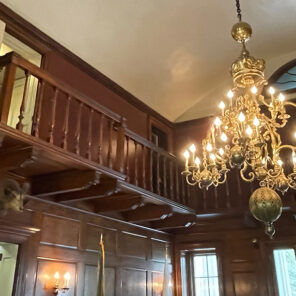
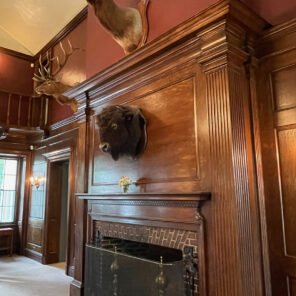

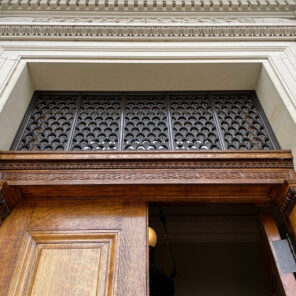
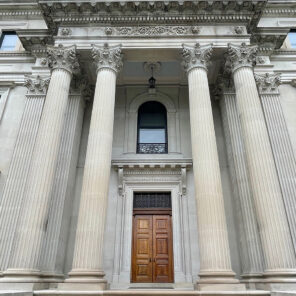
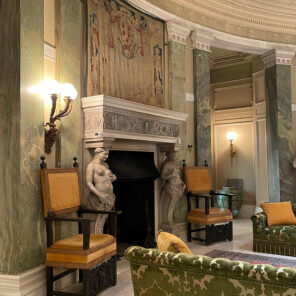

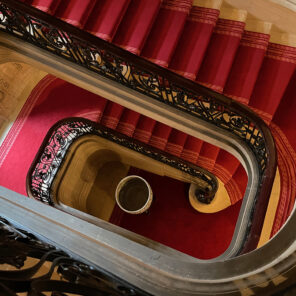

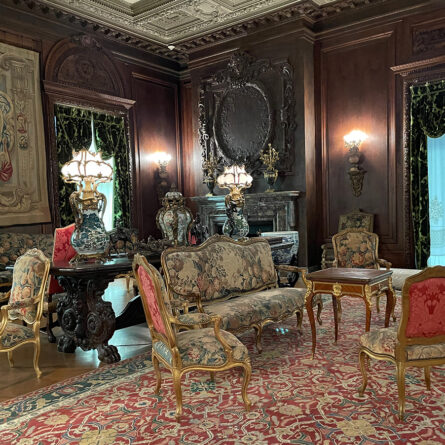
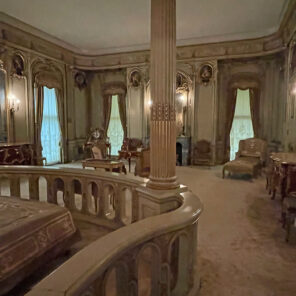
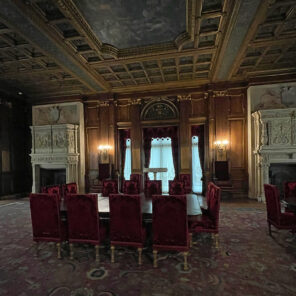
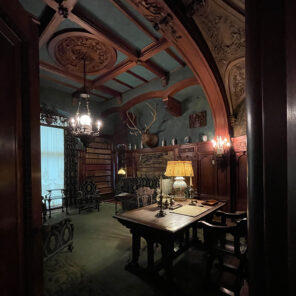
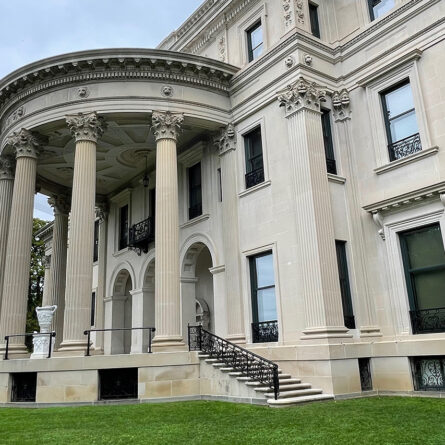


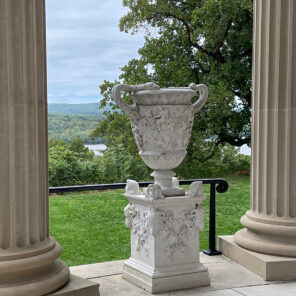

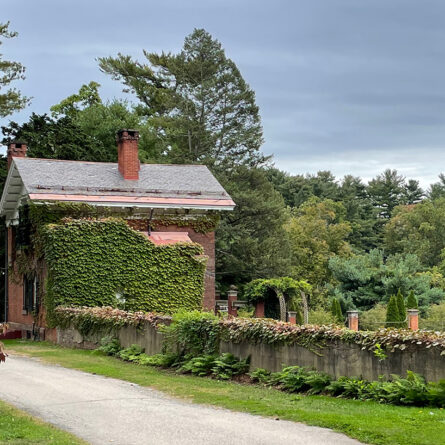
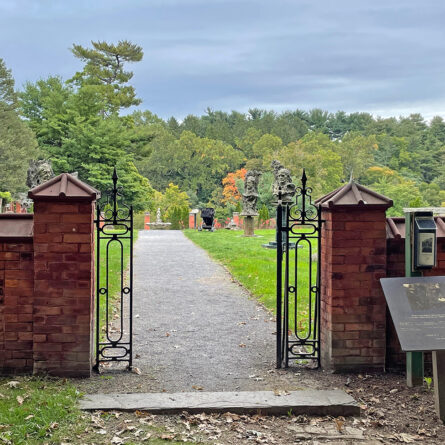
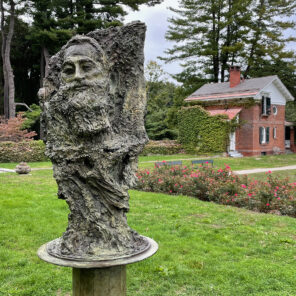

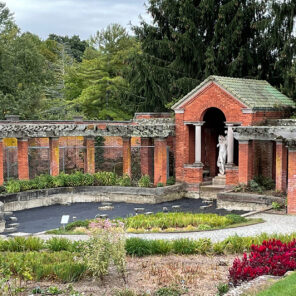
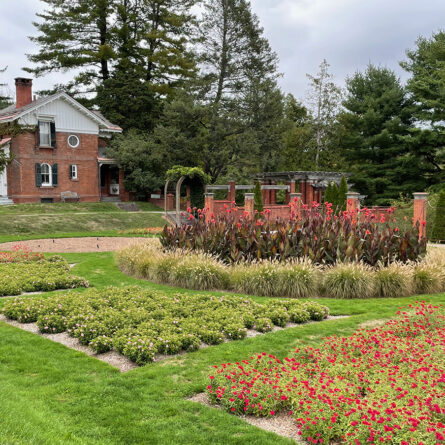
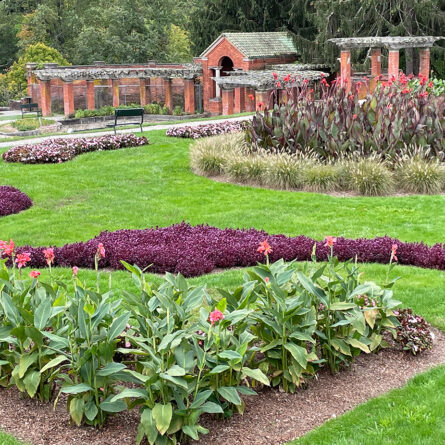
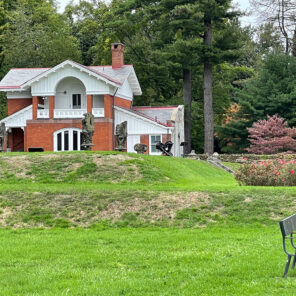

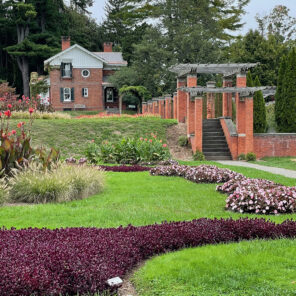

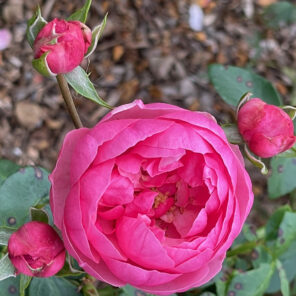
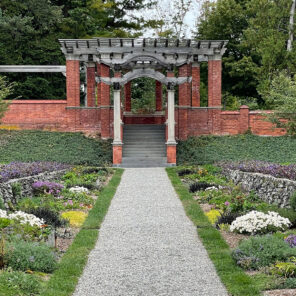
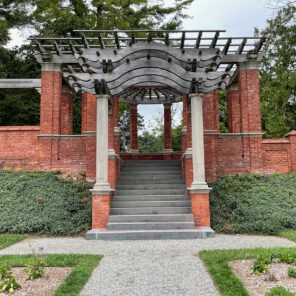
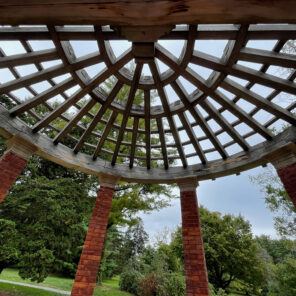







Comments are closed here.